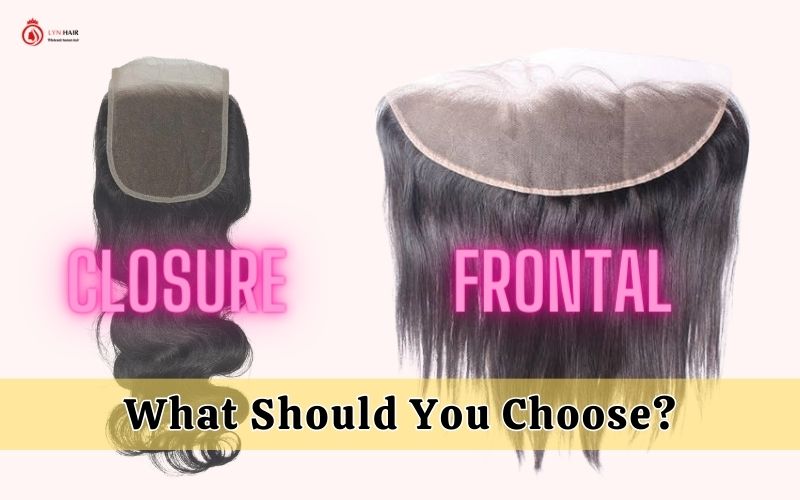Uncategorized
Difference Between Closure And Frontal – What Should You Choose?
The world of hair extensions and wigs offers a plethora of options, each designed to enhance your style and cater to your specific preferences. Among these choices, lace closures and lace frontals stand out as versatile tools that can transform your hairstyle. If you’ve ever wondered about the difference between closure and frontal, uncertain about which one to choose, this article will serve as your guide to understanding the key differences between lace closures and lace frontals.
1. What is a lace frontal ?
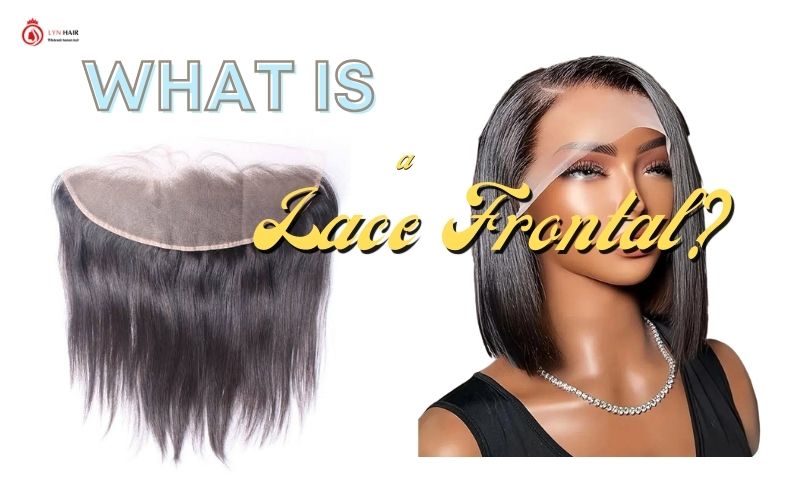
A lace frontal is a type of hairpiece or hair extension commonly used in the field of hair styling and wigs. It is designed to cover the front area of the scalp, from ear to ear, in order to create a natural-looking hairline and part. Lace frontals are typically made from a piece of lace material that is attached to a base, and individual strands of hair are hand-knotted onto the lace. The most common dimensions of the lace frontal are 13×4 inches or 13×6 inches.
>> SHOP NOW: HUMAN HAIR LACE FRONTALS
2. Pros and cons of Wearing Lace Frontals
The Pros of Wearing Lace Frontals:
Natural Appearance: Lace frontals provide a realistic and natural-looking hairline. When installed properly, they mimic the appearance of hair growing directly from the scalp, enhancing the overall look of wigs and hair extensions.
Versatility: Lace frontals offer a wide range of styling options. You can part your hair in different ways, wear your hair pulled back, or create various hairstyles without the hairpiece being easily detectable.
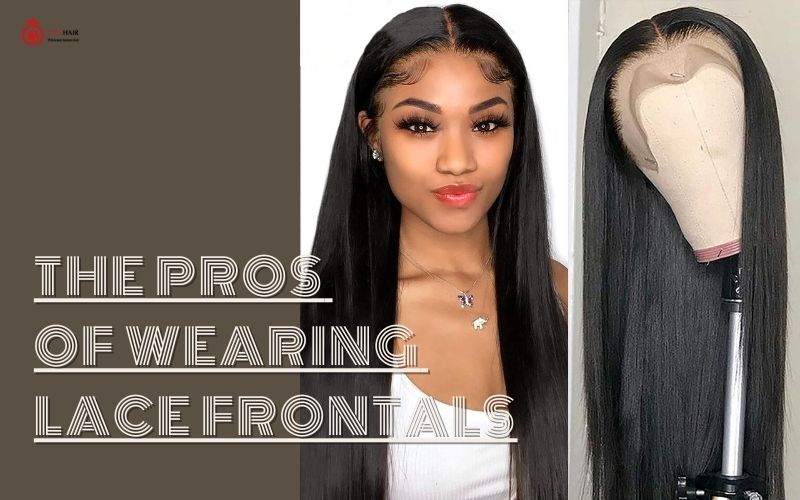
Hair Protection: They protect your natural hair by providing a barrier between your hair and the elements, reducing the need for constant styling and manipulation. This can promote healthier natural hair growth.
Concealment of Hair Loss: Lace frontals can be used to conceal hair loss, thinning, or bald spots along the hairline, helping individuals regain confidence in their appearance.
Customization: You can customize the hairline and parting style of lace frontals to suit your preferences and achieve a unique look.
Quality Materials: High-quality lace frontals made from human hair offer a natural texture, feel, and appearance, and they can be dyed, styled, and treated like natural hair.
The Cons of Wearing Lace Frontals:
Maintenance: Lace frontals require regular maintenance, including washing, conditioning, and styling. Failing to care for the hairpiece properly can lead to tangling, matting, and a shorter lifespan.
Skill Required: Installing and maintaining lace frontals can be challenging and may require professional help. Proper attachment methods like gluing, taping, or sewing demand skill and practice.
Expense: High-quality lace frontals, especially those made from human hair, can be expensive. The initial cost can be a drawback for some individuals.
Allergic Reactions: Some people may experience skin sensitivities or allergies to the adhesives or glues used to secure lace frontals. It’s essential to perform a patch test before using any products on your skin.
Limited Longevity: Lace frontals, like all hairpieces, have a limited lifespan. Depending on the quality and care, they may need to be replaced or refurbished after a few months to a year.
Installation Time: The process of installing lace frontals can be time-consuming, and it may take a while to achieve the desired look, especially for those new to the process.
3. How to install a lace frontal
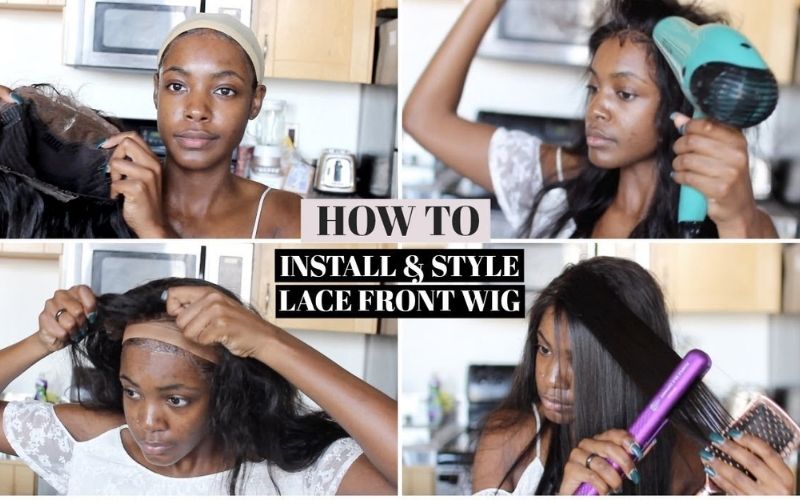
Installing a lace frontal can be a bit complex, and it’s often recommended to seek the help of a professional hairstylist, especially if you’re new to the process. However, if you’d like to attempt it yourself, here’s a general guide on how to install a lace frontal:
- Prepare your natural hair by braiding or creating flat cornrows.
- Clean your forehead and hairline with alcohol and cotton swabs.
- Apply a thin layer of adhesive (glue or tape) along your hairline and wait for it to become tacky.
- Position the lace frontal onto your head, aligning it with your natural hairline.
- Press the lace frontal onto the adhesive, starting from the center and moving outward.
- Secure the edges with additional adhesive or hairpins/clips for glue.
- Trim any excess lace along the hairline and style the frontal.
- Check for visible adhesive, make adjustments, and style your natural hair to blend.
- Maintain the frontal with regular washing, conditioning, and adhesive touch-ups as needed.
4. What Is A Lace Closure?
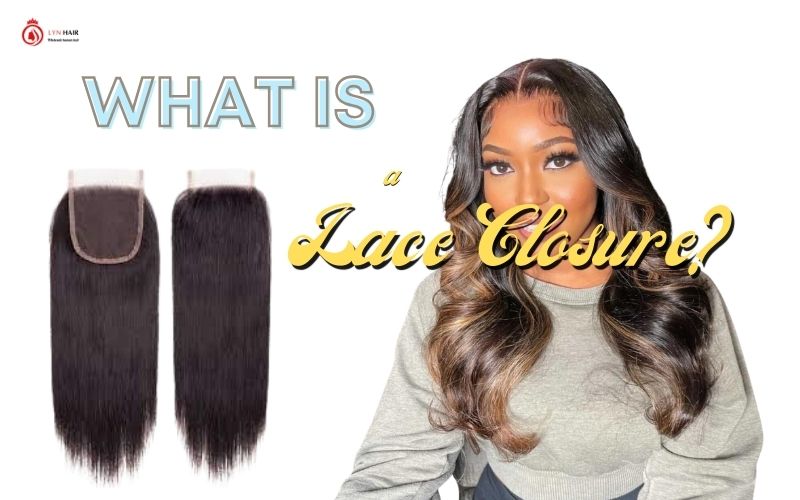
A lace closure is a hairpiece or hair extension commonly used in the world of wigs and hair weaves. It is designed to cover a specific section of the scalp, typically the top or crown area, to create a natural-looking part and hairline. Lace closures are made by attaching individual strands of hair to a piece of lace or lace-like material. Lace closures come in a variety of sizes, with the most common dimensions being 4×4 inches or 5×5 inches.
>> SHOP NOW: CLOSURE AND FRONTALS
5. The Pros and cons of Wearing Lace Closures
The Pros of Wearing a Lace Closure:
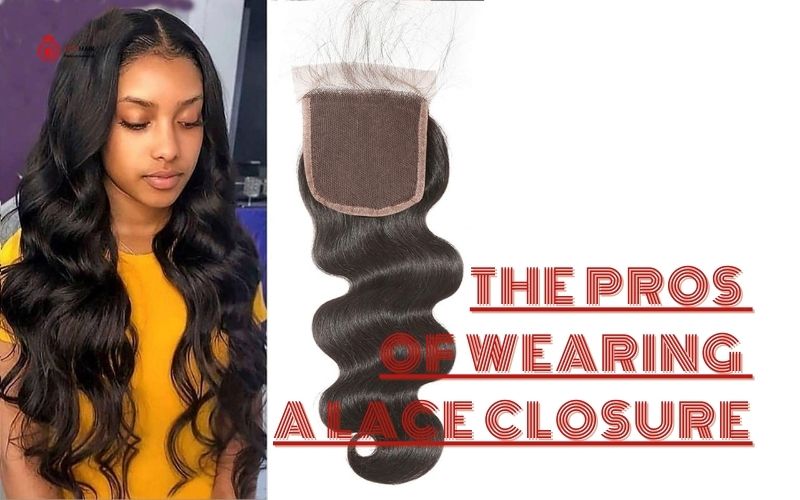
Natural Appearance: Lace closures provide an exceptionally natural appearance, mimicking the look of hair growing directly from the scalp. This enhances the overall realism of wigs, hair extensions, and weaves.
Versatility in Styling: Lace closures offer versatile styling options. They allow for the creation of various parting styles, including middle parts, side parts, and more, giving wearers the freedom to express their unique style.
Hair Protection: By acting as a protective barrier, lace closures shield the wearer’s natural hair from excessive styling and environmental factors. This protection can promote healthier hair growth and minimize damage.
Seamless Integration: When properly installed, lace closures seamlessly integrate with wigs and weaves, providing a flawless finish and enhancing the overall aesthetic of the hairstyle.
Flexibility in Size: Lace closures come in different sizes, such as 4×4 inches or 5×5 inches. The choice of size allows for customization, offering greater flexibility in achieving desired hairstyles.
The Cons of Wearing a Lace Closure:
Skill and Expertise Required: Installing and maintaining lace closures can be challenging, particularly for those new to the process. Achieving a natural look often requires professional expertise, which can add to the overall cost.
Initial Cost: High-quality lace closures, especially those made from human hair, can be expensive. This initial investment may be a deterrent for some individuals.
Maintenance Demands: Proper care and maintenance are essential to preserve the appearance and longevity of lace closures. Regular washing, conditioning, and potential reattachment can be time-consuming and require attention to detail.
Adhesive Allergies: Some individuals may experience skin sensitivities or allergies to the adhesives or glues used to secure lace closures. A patch test is advisable before use.
Limited Longevity: Like all hairpieces, lace closures have a finite lifespan. Depending on the quality and care, they may need to be replaced or refurbished periodically.
Installation Time: The process of installing a lace closure can be time-consuming, especially for those new to the technique. Achieving the desired look may require patience.
6. How to install a lace closure
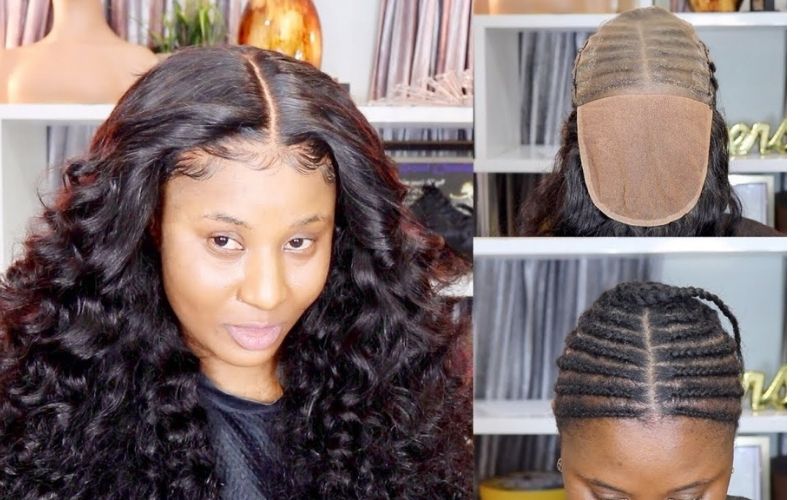
Installing a lace closure can be a precise process, and it’s often recommended to seek professional help, especially if you’re new to the procedure. However, if you’d like to attempt it yourself, here’s a general guide on how to install a lace closure:
- Prepare your natural hair by braiding or creating flat cornrows.
- Clean your forehead and hairline with alcohol and cotton swabs.
- Apply a thin layer of adhesive (glue or tape) along your hairline and wait for it to become tacky.
- Position the lace closure onto your head, aligning it with your natural hairline.
- Press the lace closure onto the adhesive, starting from the center and moving outward.
- Secure the edges with additional adhesive or hairpins/clips for glue.
- Trim any excess lace along the hairline and style the closure.
- Check for visible adhesive, make adjustments, and style your natural hair to blend.
- Maintain the closure with regular washing, conditioning, and adhesive touch-ups as needed.
7. Difference between closure and frontal
The main difference between frontal vs closure wig lies in their size and coverage on the scalp. Here are the key distinctions between closure vs frontal:
|
Aspect |
Closure |
Frontal |
|
Size and Dimensions |
Smaller, typically 4×4 inches or 5×5 inches |
Larger, typically 13×4 inches or 13×6 inches |
|
Coverage Area |
Covers a specific area on the scalp, often the top or crown, allowing for a natural-looking part and hairline in that localized area |
Extends from ear to ear and a few inches back, covering a broader section of the scalp, providing a more extensive and versatile parting space and a more comprehensive hairline |
|
Styling Versatility |
Offers limited styling versatility as it focuses on creating a realistic parting and blending hair extensions or a wig with natural hair in a localized area |
Provides greater styling versatility due to its larger size, allowing for various parting styles (middle parts, side parts, deep side parts), updos, high ponytails, and a more comprehensive and natural appearance |
|
Installation and Maintenance |
Generally easier to install and maintain compared to frontals due to their smaller size. Requires less adhesive or sewing and is typically more beginner-friendly |
May require more expertise in installation and maintenance due to its larger size. Demands precise placement and attachment techniques to achieve a natural look. Installation can be more complex |
|
Cost |
Generally more affordable than frontals, primarily due to their smaller size and reduced material costs |
Usually more expensive than closures due to their larger size and the additional material required for construction |
8. Lace front vs lace frontal : Which One Is Better?
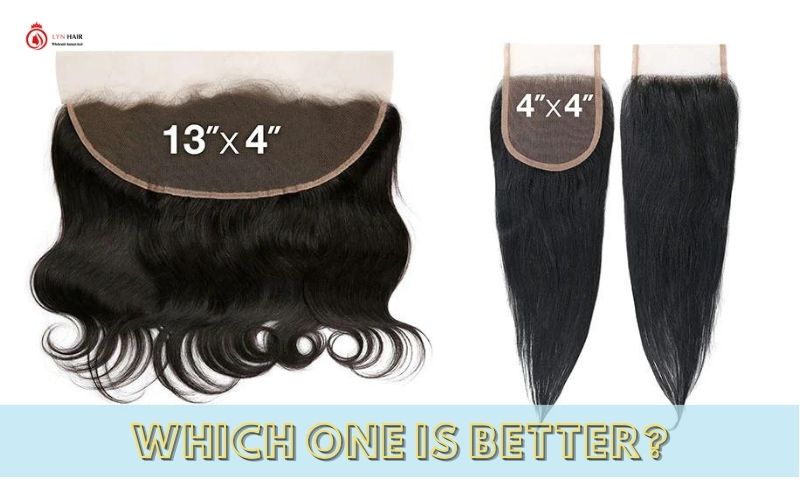
The choice between a lace front and a lace frontal depends on your specific needs, preferences, and the hairstyle you want to achieve. Both lace fronts and lace frontals have their advantages and are suitable for different purposes.
If you’re looking for an everyday, convenient option with a natural hairline and easy maintenance, a lace front wig is a good choice.
If you want maximum styling versatility, a more comprehensive and natural appearance, and are willing to invest in professional installation or have advanced styling skills, a lace frontal might be better for you.
Ultimately, both lace front wigs and lace frontals have their advantages, and the better option depends on your personal styling goals and comfort level with installation and maintenance.
𝑪𝒐𝒏𝒕𝒂𝒄𝒕 𝒏𝒐𝒘 𝒕𝒐 𝒐𝒓𝒅𝒆𝒓:
☎ Whatsap: +84.936.085.069
👉 Follow us on Instagram: @lyn.hair_official
🌍 Website: lynhair.com

